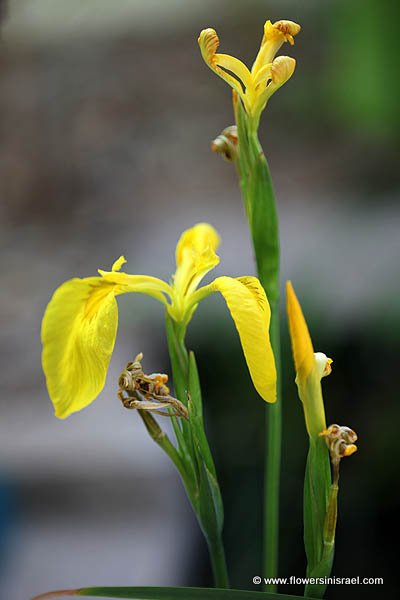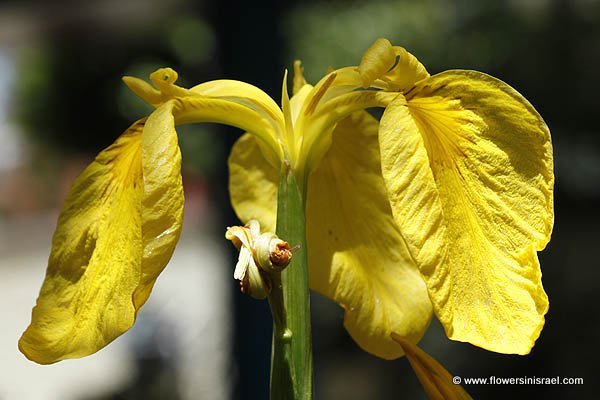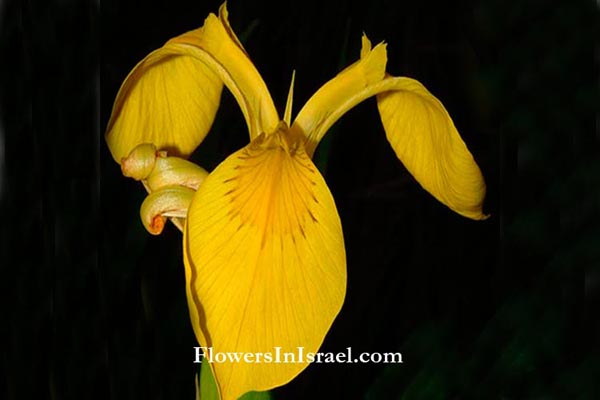Yellow iris, Yellow Waterflag, Jacob's sword,
Hebrew: אירוס ענף, Arabic: السوسن الشمالي الكاذب
| Scientific name: | Iris pseudacorus L. | |
| Common name: | Yellow iris, Yellow Waterflag, Jacob's sword | |
| Hebrew name: | אירוס ענף | |
| Arabic name: | السوسن الشمالي الكاذب | |
| Nederlandse naam: | Gele lis | |
| Family: | Iridaceae, אירוסיים |

|
| Life form: | Geophyte | |
| Stems: | 75-160 cm high | |
| Leaves: | Rosette, entire | |
| Flowers: | Yellow | |
| Fruits / pods: | Loculicidal capsules | |
| Flowering Period: | April, May | |
| Habitat: | Humid habitats | |
| Distribution: | Mediterranean Woodlands and Shrublands | |
| Chorotype: | Euro-Siberian - Med - Irano-Turanian | |
| Summer shedding: | Perennating |

Derivation of the botanical name: Iris, ιριϛ, ιδοϛ, rainbow; female messenger, announcer of the gods, the Greek goddess of the rainbow. pseudacorus, ψευδηϛ, false, i.e. resembling but not equalling; acorus, the generic name of the sweet sedge. Iris pseudacorus is simply often called " segg," a corruption of the word sedge, and both derived from the Anglo-Saxon word segg, a small sword, the name being employed in obvious allusion to the long sword-shaped leaves that rise so boldly from the water. It is also called the fleur-de-lys and the yellow flag, the outer segments of the perianth fluttering in the breeze in a degree that suggested to some early writers the waving of a flag. The Hebrew name: אירוס, iris, transliteration from the scientific name.
Link: Fleur-de-lis,fleur-de-lys, fleur-de-luce,lily flower, שושן, פלור דה ליס 


|